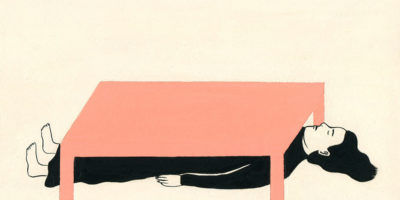
When Women Were Sent Away
Justice Amy Coney Barrett sees no harm in forcing women to give birth to unwanted babies. They can simply give them up for adoption, she has said.
Simply? Simply take a year out of their lives and end up with nothing except a damaged reputation and a sense of guilt and loss?
Some people who grew up after abortion became legal, like Justice Barrett, don’t appreciate how devastating an unwanted pregnancy could be before Roe. Married women who couldn’t afford larger families, or whose husbands abused them—the majority of abortion-seekers today—suffered enormously. And being single and pregnant in those days was a disgrace. So most of these young women couldn’t stay at home. Raising a baby without a husband was almost unheard of. If you knew the right people and could afford it, you could get a safe abortion from a pricey but safe doctor, or pay the pricey airfare to Puerto Rico. Not easy for women whose parents didn’t know or wouldn’t cooperate or couldn’t afford it. Then there were the predatory illegal practitioners whose patients were often injured or killed.
Some women survived due to organizations like Boston’s Crittenton Hastings House. The outgrowth of a merger between the nationwide Florence Crittenton shelters and the Boston Female Moral Reform Society—yes, that was its name—the “Crit” basically hid pregnant women until their babies were born. The pregnant women lived at the house, where they received medical care and counseling.
The Crit helped to arrange adoptions if the women wanted that. Afterward they’d return home with prescriptions for The Pill (“to regulate their metabolism”) and whatever cover story they’d concocted. And they’d have had to give up jobs or leave school, cut ties with friends, and maybe face alienation from their families.
In a pre-Roe world, the Crit didn’t have room to house all the women who flocked to it. So it sent “Crit girls” to families as cut-rate nannies. Families paid them a tiny sum plus room and board to babysit and do light housework. They had to return to the Crit when they were seven months along, so they never stayed for more than three months.
For me, a working mother (also more of a rarity, and more of a challenge, back then), the Crit was a resource. Daycare in those days usually meant a woman with children who cared for other children in her home. We couldn’t afford nannies from abroad. We figured we could stand anyone for three months. So we had eight “Crit girls” over three years. They’d been in college or working. They generally loved our kids, and the kids reciprocated. But while the Crit had strict standards for how we should treat them, they were unquestionably exploited—forced to work for a pittance for a short term in a strange place.
Some of them stayed in touch. Six gave their babies up for adoption. One of the two who didn’t was Alison, who had been attending a Seven Sisters college. Her family owned two successful retail stores; boyfriend Dan was a business school student from a poor family. Alison and Dan wanted to get married, but Alison’s parents thought that Dan wanted a shortcut into the family business. So the couple planned the pregnancy to force her parents’ hand. But instead, the parents made Alison go to the Crit, so she wouldn’t be seen in her affluent hometown. Eventually they relented, and the couple was married a month before the baby came.
The other girl who kept her baby was Laura, a poor girl who had become involved with a rich boy. She saw him as a way out of her miserable life. Her father wasn’t in the picture. Her two brothers had both done prison time. The rich boy’s family made it clear that life with him wasn’t an option. Laura’s mother wanted her to keep the baby and return home. But several months after the baby was born, Laura appeared on our doorstep alone. She’d married the first man who’d come along, and he was abusing her.
Roe vs. Wade spelled the end of the Crit girls, along with the end of the need to put your life on hold if you became pregnant by accident. The Crit is now a shelter for mothers of young children and women in the last trimester of pregnancy. The Crit girls were useful for me, and I’m glad we could show them kindness, but I’m glad they’re not around anymore.
I hope the fallout from the Supreme Court decision won’t bring back a time of deep shame and confusion for women with unintended pregnancies.
Barbara Mende lives in Boston. She fends off retirement with writing, editing, bookkeeping, webmastering, and other paperwork.



